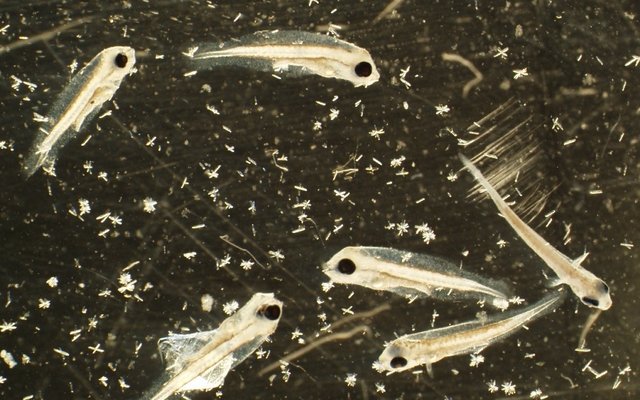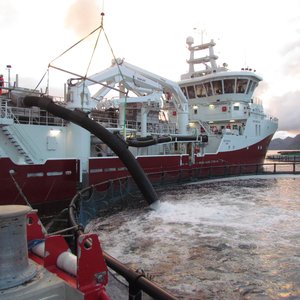The Florida pompano (Trachinotus carolinus), a fish species that can live in waters of a wide range of salinity, is a prime candidate for aquaculture commercial fish production in the United States. There are less than ten aquaculture farms across the U.S. that have been successful in commercially raising and distributing Florida pompano. Many farms import their broodstock from countries such as Mexico, the Dominican Republic and Brazil. When attempting to rear Florida pompano from hatch to market, farms face a variety of challenges including access to seawater. On inland farms, seawater must be mixed on-site using artificial sea salt products, which can contribute to high production costs and lower profit returns.
While several studies have investigated using juvenile Florida pompano in low salinity, no low salinity experiments have been conducted on Florida pompano larvae. To address the knowledge gaps of the impact of low salinity on Florida pompano larval health, researchers from Florida Atlantic University’s Harbor Branch Oceanographic Institute, in collaboration with two local fish farms, Live Advantage Baits and Proaquatix, conducted a novel experiment that serves as a model study for future on-farm collaborations and helps build a bridge between scientists and farmers in aquaculture.
The objective of the study was to determine the optimal salinity required to culture fingerlings from hatch to weaning under on-farm conditions. Low salinity conditions can affect the early development of the Florida pompano by increasing osmoregulatory stress, which reduces the availability of metabolic energy reserves, otherwise needed for developmental processes such as cellular formation.
For the study, Florida pompano larvae were reared in three different salinities: 10, 20 and 30 parts per thousand (ppt) at local producers' farms. Growth, fatty acid profiles and transcriptome responses (cellular formation) were quantified every three days after hatching (three, six, nine, 12, 15, 18 and 24 days post-hatch) and results were compared across salinities.
Results showed that larvae reared at 10 ppt grew at a normal rate and the developmental stage had a greater impact than salinity on fatty acid composition and larval gene expression.
“We have shown that it is possible to grow this warm water marine species in salinities as low as 10 parts per thousand, which makes it more economic and easier for producers far from the coast to attempt Florida pompano commercial growth,” said Sahar Mejri, senior author and an assistant research professor, Department of Aquaculture and Stock Enhancement at FAU Harbor Branch. “We expect to run this study for a longer period to investigate the long-term effects of low salinity on larval health and development.”
An important metric for determining the health and viability of Florida pompano as a commercial food species is the lipid profile of the larvae. “Larvae reared at the lowest salinity, 10 parts per thousand, seemed healthy and showed normal growth and physiological development overall with no adverse effects,” said Mejri. “Larval diets combined with developmental stages had a greater impact than salinity on fatty acid composition and transcriptomics gene expression.”
David J. Bradshaw, Victoria Uribe, Laura E. King, Carlie S. Perricone, Gonzalo Illán, Elizabeth Allmon, Marisol Sepulveda, Marty Riche, Paul S. Wills, Sahar Mejri. (2023) Effects of low salinities on growth, fatty acid composition, and transcriptome in Florida pompano (Trachinotus carolinus) at early developmental stages. Aquaculture, Volume 563, Part 1, 2023, 738964 https://doi.org/10.1016/j.aquaculture.2022.738964













